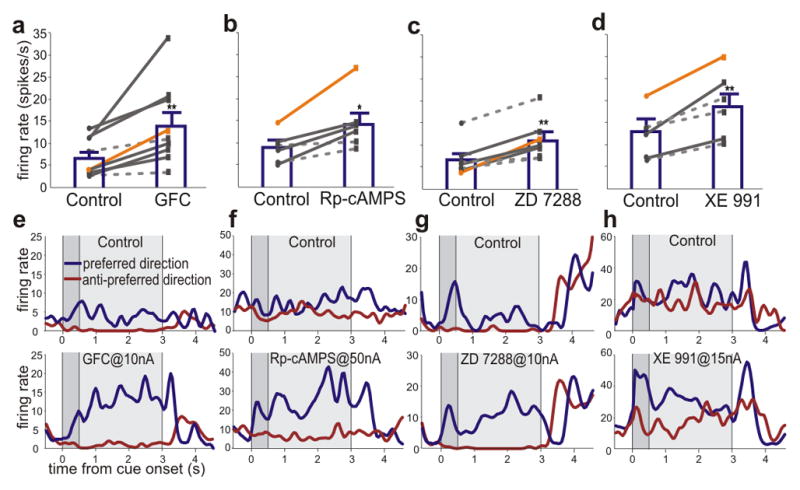Figure 4.

Iontophoresis of compounds that inhibit cAMP-PKA signaling, or block HCN or KCNQ channel signaling, strengthens delay-related firing in aged PFC DELAY neurons. a–d,. A summary of the results showing a significant increase in population-average firing rate for the neuron’s preferred direction compared to control conditions (paired t-test, p<0.01 for a, c and d, and p<0.05 for b) following iontophoresis of: the α2A adrenergic agonist guanfacine applied at 10nA (GFC; a, significant effects in 7 out of 9 neurons, t-test, p<0.05, indicated by solid lines); the cAMP inhibitor Rp-cAMPS at 50 nA (b, significant in 4 out of 6 neurons); the HCN channel blocker, ZD7288 at 15 nA (c, significant in 4 out of 7 neurons); and the KCNQ channel blocker XE991 at 15 nA (d, significant in 3 out of 6 neurons). In all cases, significant effects were found more frequently than expected by chance (binomial test, p<0.005). The orange lines represent the individual neurons shown in e-h. e–h, Individual examples of neurons under control conditions (top) firing to their preferred (blue trace) or anti-preferred (red trace) directions, compared to their firing patterns following iontophoresis of guanfacine (e), Rp-cAMPS (f), ZD7288 (g) or XE991 (h). The orange lines in a-d indicate the individual neurons shown in e-h. Error bars are s.e.m. * p<0.05, ** p<0.01 significant difference between drug vs. control for the neuron’s preferred direction.
